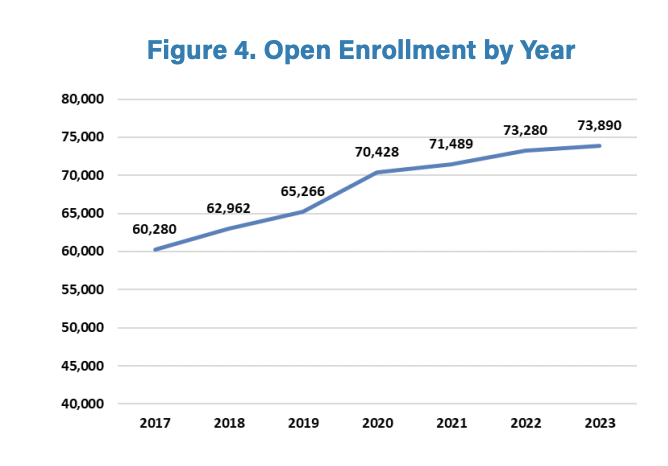The News: The Wisconsin Institute for Law & Liberty (WILL) released its annual Apples to Apples report, which highlights a widening achievement gap between Wisconsin’s traditional public and choice schools. This trend has grown in recent years with no signs of slowing down.
The Quote: WILL Research Director, Will Flanders, stated, “Our 2025 Apples to Apples report includes the most recent student data from the 2023-24 report cards with additional demographic modeling to provide a true assessment that accounts for variables that drive academic performance. Once again, across a level playing field, choice schools in Wisconsin are performing better than their public-school counterparts.”
What is Apples to Apples? WILL’s annual Apples to Apples report puts schools on a level playing field to fairly assess education in Wisconsin across public, charter, and private voucher schools.
Demographic factors have historically played a large role in student performance. Any honest assessment of how schools and school sectors are performing must take these factors into account. However, much of the existing reporting on school performance ignores this reality.
This annual report endeavors to incorporate factors such as disability and economic status through rigorous statistical modeling that controls for, and assesses the impact of, these student characteristics.
Key Findings:
- Students in the Milwaukee Parental Choice Program continue to outperform their public-school peers. Proficiency rates in private choice schools located in Milwaukee were about 14.30% higher in English/Language Arts (ELA) and 14.18% higher in math on average than proficiency rates in traditional public schools in Milwaukee after controlling for demographic characteristics. These gaps are the largest in the years this report has been conducted.
- Statewide, private choice students outperform their public-school peers in ELA and math. Proficiency rates were about 8.57% higher in ELA and 5.42% higher in math for students participating in school choice statewide than traditional public-school students.
- Choice and charter schools have higher rates of academic growth than traditional public schools. Statewide, choice schools averaged 7.23 more growth points than traditional public schools. Charter schools averaged 1.94 more growth points.
Open Enrollment Rises Again: Wisconsin’s largest school choice program is the public-school open enrollment program. This program allows students from one school district to transfer to another district that has open seats for the next school year. The program continues to gain in popularity, even as overall enrollment decreases.

Why These Findings Matter: Wisconsin is home to the oldest school choice program in the nation. It’s critical that policy makers understand how choice schools perform while accounting for the fact that they often take on students from underserved communities.
This year’s report also comes after months of controversy surrounding the Department of Public Instruction for lowering standards to hide what we believe are underperforming schools.
Read more:
- Apples to Apples 2025 Report, March 2025
